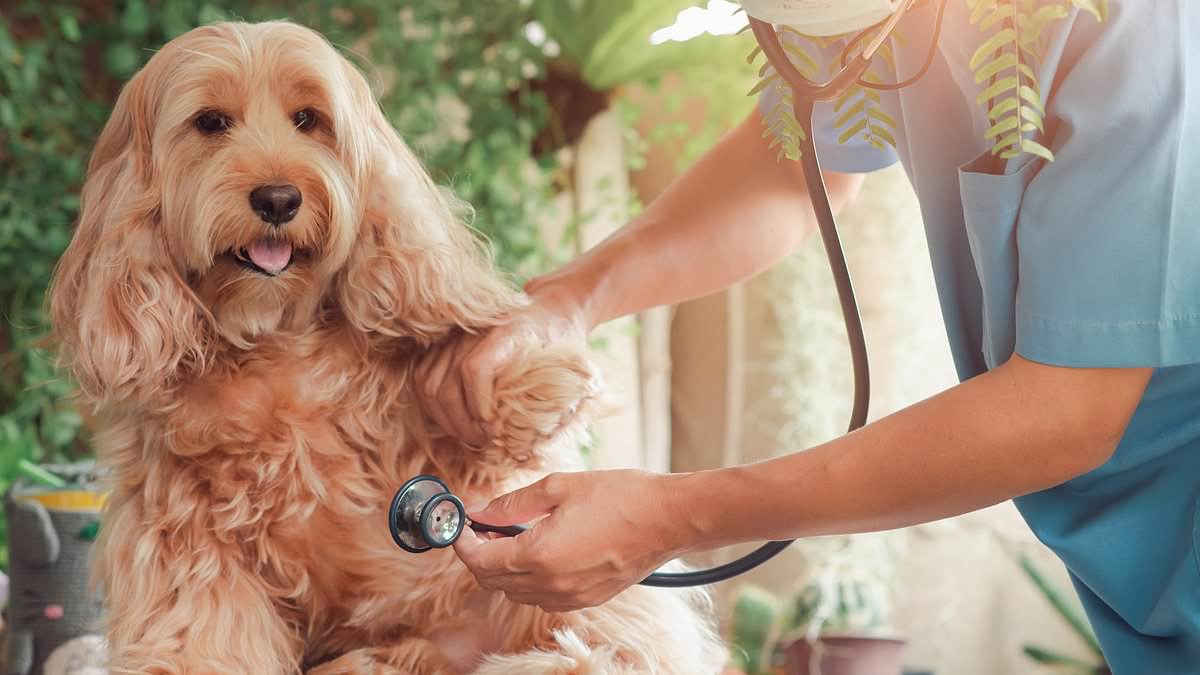Copyright dailymail

When your pet is unwell and needs medical attention, it may feel as though your only option is to take them to the vet and stump up whatever eye-watering cost they demand. But there are little-known tricks which slash the cost of treatment by hundreds of pounds and can shield you from rip-off bills. The Competition and Markets Authority (CMA) last week said the veterinary industry has become riddled with hidden fees, confusing pricing and a lack of competition, leaving families routinely overpaying for medicines and treatments. Among the watchdog’s latest proposals are strict rules forcing vets to publish full price lists, give written cost estimates for treatments greater than £500 and automatically issue prescriptions so pet owners can shop around for cheaper medicines online. But you don’t have to wait until the proposals are enforced – which could be as late as the end of 2026. Here are seven ways you can already use to fight back... Use independent vets if you can Vet prices are soaring – up by 63 per cent between 2016 and 2023, which is well above inflation. But some practices charge more than others. If your pet needs treatment, be sure to shop around to compare prices. The industry has undergone a huge wave of consolidation in recent years. In 2013, one in ten practices was owned by a larger group; this figure has since risen to one in six. The big veterinary groups are CVS, IVC, Linnaeus, Medivet, Pets at Home and VetPartners, and the CMA found that some of these large practices charged almost 17 pc more than independent vets, with many of their outlets hiking prices soon after being bought out. It is wise to check if there is an independent practice in your area. However, it can be tricky to tell which practices actually are, since two-thirds of large vet chains do not rebrand the vets they buy. However, you should be able to find the information on the vet’s website or by simply asking them. The key is to shop around as costs will vary. The CMA report even found that some vets do not have a price list. So, if your pet needs treatment, ask for a quote and then present it to other practices to see what they would charge. Purchase medication online Many vets overcharge and it is quite common for prescription medicine to be twice as much as what can be found online, says Martin Coleman, chair of the CMA’s inquiry group. Money Mail found a three-month supply of Simparica Trio flea and wormer tablets cost £80 when bought through a local vet practice, for instance, but the price dropped to £40 for an online order. If the drugs require a prescription, you will need to get this from your vet first, and Mr Coleman adds that pet owners ‘do not always feel confident asking for a prescription or buying medicine online, even when it could save them hundreds of pounds’. But you do not have to feel awkward, no matter how uncomfortable your practice makes you feel – it is your right to ask. Vets are legally obliged to write you a prescription and let you buy the medicine elsewhere. You can check whether online retailers are legitimate and part of the accredited internet retailer scheme via the Government’s website (vmd.defra.gov.uk/InternetRetailers). And contact the Veterinary Medicines Directorate for any doubts or queries about pet medications (gov.uk/government/organisations/veterinary-medicines-directorate). Watch out for key exclusions Pet insurance is expensive enough that it can be tempting to pick the cheapest plan. But while shopping around for a good deal is wise, be sure it is not at the expense of not being covered when you really need it. Pet policies are riddled with exclusions that mean some services and treatments are not covered. Among the most common to watch out for are dental work, emergency boarding if something happens to you and you are temporarily unable to look after your pet, burial and cremation costs, and behavioural issues. If these are not covered under your policy and you would prefer to have them for peace of mind, you may be able to ask your insurer to add them on at a cost. Burials require about £250 to £800 in pet graveyards, depending on the size of your animal. However, you are allowed to bury them in your back garden provided you own it and the site is clear of any water sources, underground cables or pipes. Dental costs for pets can be very high, too. Removing a single dog tooth, for example, can cost anywhere from £50 to £300. So, if your animal’s breed is prone to having bad teeth – such as greyhounds or Siamese cats – dental cover could save you money. Cover for common conditions Some breeds of cats and dogs commonly suffer from particular health issues that are not typically covered by standard policies. Before you sign up to a deal, check which conditions your pet is most likely to develop and make sure they are not excluded from your policy. This newspaper found just one insurer, ManyPets, was prepared to cover hip dysplasia as a pre-existing condition – a common, but often complex ailment found in German Shepherds. The vet charged £1,080.72 a year for a five-year-old of the breed with no other health conditions. It may sound steep, but the cost of hip dysplasia treatment can reach £5,000 per hip, so there is a chance that paying the additional premium may save you money in the long term. The cheapest quote for the same dog, but without covering hip dysplasia, was £146.16 a year, with a £1,000 maximum claim per condition, a £1,000 yearly limit and a £250 excess. No more than £16 for prescriptions Prescription costs vary considerably – the average charge for a vet to write one is £16, says the CMA, but one in ten charges £30 or more. You may want to question why if your vet does the same. Build up a pet savings pot Pet insurance should cover the cost of treatment, but you may still have to pay for it upfront and wait to be reimbursed. Vet bills can often reach thousands of pounds, so it makes sense to set up an easy-access savings pot just for your pet that earns interest until needed. If this would be a struggle, however, pick an insurer that is prepared to pay bills directly to the practice and check that your vet would be willing to co-operate this way. Insurers that can stump up the cost directly include Petplan, Napo Pet Insurance, British Pet Insurance, Vetsure, Animal Friends and Tesco. If you do not have any pet insurance, though, a ring-fenced savings pot to cover any unexpected veterinary bills is essential. Most pet owners are likely to be in this position – some 14.2million UK households have pets, but there are only 4.6million insurance policies. A check-up tends to cost £60, but emergency care can run into hundreds or even thousands of pounds. For instance, the typical cost of treatment for a labrador that has cruciate ligament damage is £2,821, says Animal Friends, while removing a tumour from a cat costs an average of £1,101. Spot issues early to avoid bills Given the expense of any form of pet medical treatment, it makes sense to invest time in keeping your animal as healthy as possible. This includes researching the signs of common health issues, breed-specific conditions and spotting small health issues before they become big ones. An RSPCA spokesman says: ‘Preventing problems is cheaper and easier than treating them once they arrive. 'Keep on top of preventative care such as worming and flea treatments which can become costly if not addressed.’



